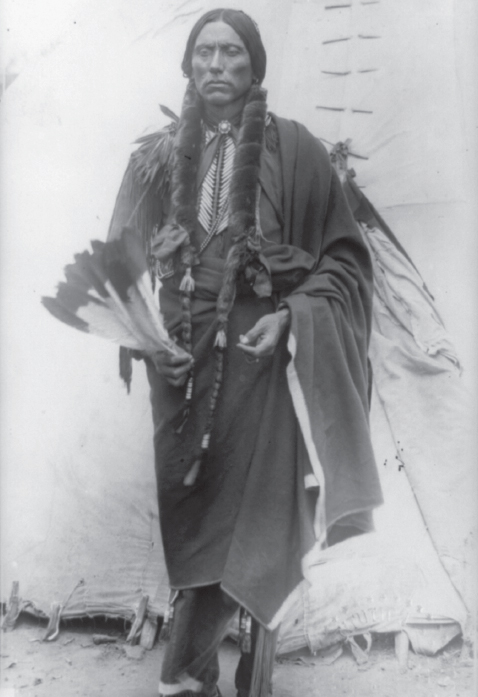
White buffalo hunters killed off the greater part of the herds on the Great Plains by the end of the 1880s.

White buffalo hunters killed off the greater part of the herds on the Great Plains by the end of the 1880s.
The United States Army’s top general was William Tecumseh Sherman. He believed there was only one way to end the fighting with the Native Americans. Kill all the buffalo and that would wipe out their source of food and clothing. It was “the only way to bring lasting peace and allow civilization to advance.”1 Soon, buffalo hunters were killing buffalo by the millions. Some freight trains from the West carried only buffalo skins. The hides sold for three dollars apiece.
On the southern Great Plains, white hunters were killing the buffalo in great numbers. Soon the Comanche would find none at all to hunt. Isatai was a medicine man in Quanah Parker’s band of Comanche. It was his idea to wage war against the buffalo hunters. He said his magic would protect them in battle. “Those white men can’t shoot you,” he promised. “With my medicine, I will stop all their guns.... You will wipe them all out.”2 Then the buffalo would return. The tribes could resume their old ways of life. Quanah believed in Isatai’s powers. In the spring of 1874, Quanah led the Comanche in a Sun Dance for the first time. This ceremony would insure their victory. Kiowas, Arapahoes, and Cheyenne came to join Quanah’s group. He would lead them on a raid against the buffalo hunters.
Raiding was a way of life for the Comanche. Warfare between tribes had always given warriors a chance to prove their bravery. Now the buffalo hunters and the white settlers were the other tribes.
Quanah learned that a band of white hunters was at Adobe Walls. This trading post lay on the Canadian River in north Texas. Ten years earlier, Kit Carson had attacked the Comanche there. On June 27, 1874, Quanah led seven hundred warriors toward the hunters’ camp. He told them they would find the hunters asleep in the predawn dark. Meanwhile Isatai had painted himself yellow to honor the sun. He rode up to the top of a nearby hill to watch his prophecies come true.
The twenty eight hunters (and one woman) were not asleep. About two o’clock that morning, a loud bang had awoken them. A ridgepole in one building had snapped. The hunters worked to fix it before the roof fell in. One hunter, Billy Dixon, spotted the horses of Quanah’s men. As he watched, the warriors spread out and attacked. They gave a single long war whoop.Dixon saw that this was not a raid to steal horses. The warriors were heading straight for the camp. Quickly the hunters barred the doors of the three buildings they occupied.

Quanah Parker led the Comanche people for many decades.
Isatai had promised the warriors that they could kill the sleeping whites with clubs. Quanah led his warriors right up to the buildings. The attackers tried to smash their way in with gun butts and clubs. Quanah climbed atop one building. He tried to punch holes in the sod roof and set the building ablaze. Fire from the hunters’ heavy rifles drove him off. The warriors retreated, then charged again. Each time the hunters drove them back. A bullet killed Quanah’s horse. As Quanah hit the ground, a bullet creased his shoulder. A mounted rider dashed up to his rescue.
The attacks lasted until noon. Then Quanah called his men back. Fifteen warriors lay dead. Many more had wounds. Isatai made an excuse. He said the attack failed because someone in the party had broken a taboo. Quanah knew better. One Comanche summed it up, “The buffalo hunters . . . had telescopes on their guns. Sometimes we would be standing way off, resting and hardly thinking of the fight. They would kill our horses.”3 One shot became famous. Billy Dixon killed a rider with a single shot. Later he measured the distance. It was 4,614 feet.
After Quanah broke off the attack, he led his force back onto the Staked Plains. That summer, Comanche raiders attacked from Texas to Colorado.